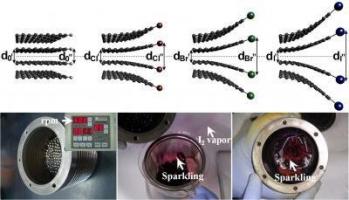Researchers from Korea's Ulsan National Institute of Science and Technology (UNIST), Case Western Reserve University and University of North Texas developed a new low-cost metal-free fuel cell catalyst that is based on edge-halogenated graphene nanoplatelets (XGnPs). They say that this new catalyst is a potential replacement for Platinum based ones currently used in fuel cells.

The researchers created the edge-selectively halogenated graphene nanoplatelets by ball-milling graphite flake with chlorine, bromine, or iodine. Experiments have shown that those XGnPs have great oxygen reduction reaction (ORR) activities with higher tolerance to methanol crossover/CO poisoning effects and longer-term stability (this compared to the original graphite and commercial Pt/C electrocatalysts).
This isn't the first research on graphene based fuel cell catalysts alternatives. Researchers from the DOE's Brookhaven National Laboratory developed a new catalyst made from Graphene, molybdenum and soybeans, which they say is the best non-noble-metal one ever developed. Last year we heard about research from Brown University that designed the cobalt-graphene catalyst. In 2011 researchers from the US DOE's Pacific Northwest National Laboratory (PNNL) and Princeton University found a way to combine Graphene and indium tin oxide (ITO) nanoparticles to create a fuel cell catalyst.